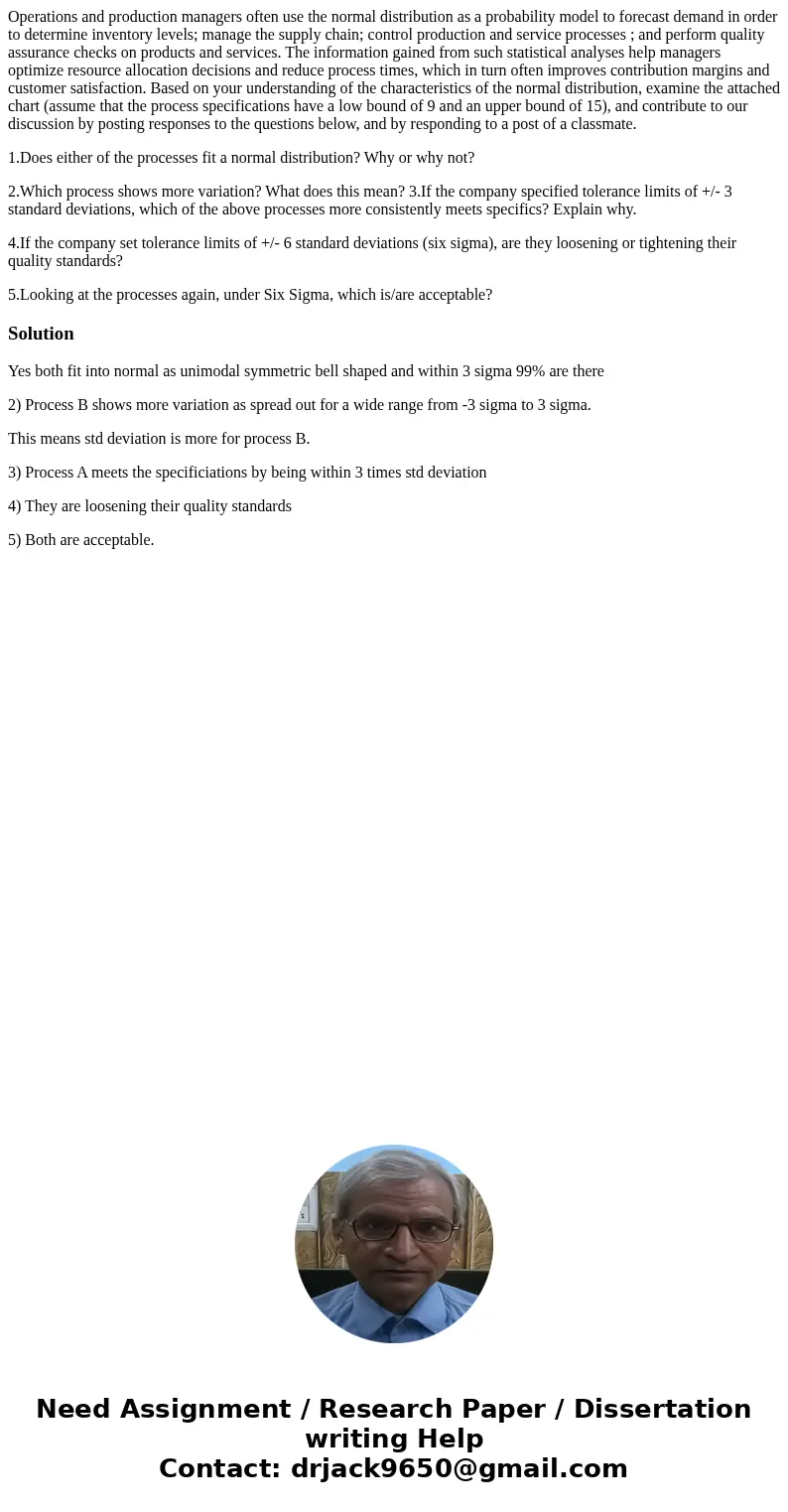Operations and production managers often use the normal dist
Operations and production managers often use the normal distribution as a probability model to forecast demand in order to determine inventory levels; manage the supply chain; control production and service processes ; and perform quality assurance checks on products and services. The information gained from such statistical analyses help managers optimize resource allocation decisions and reduce process times, which in turn often improves contribution margins and customer satisfaction. Based on your understanding of the characteristics of the normal distribution, examine the attached chart (assume that the process specifications have a low bound of 9 and an upper bound of 15), and contribute to our discussion by posting responses to the questions below, and by responding to a post of a classmate.
1.Does either of the processes fit a normal distribution? Why or why not?
2.Which process shows more variation? What does this mean? 3.If the company specified tolerance limits of +/- 3 standard deviations, which of the above processes more consistently meets specifics? Explain why.
4.If the company set tolerance limits of +/- 6 standard deviations (six sigma), are they loosening or tightening their quality standards?
5.Looking at the processes again, under Six Sigma, which is/are acceptable?
Solution
Yes both fit into normal as unimodal symmetric bell shaped and within 3 sigma 99% are there
2) Process B shows more variation as spread out for a wide range from -3 sigma to 3 sigma.
This means std deviation is more for process B.
3) Process A meets the specificiations by being within 3 times std deviation
4) They are loosening their quality standards
5) Both are acceptable.

 Homework Sourse
Homework Sourse